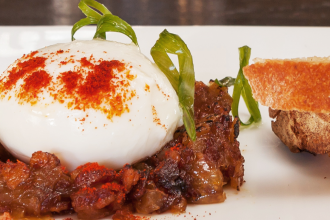Dessert wine is a right that most people waive when dining out. Either you’ve over-indulged on the Guinea Hen special for two, you’re watching cost, or maybe you’re not quite ready to move on from that luminescent bottle of white Burgundy. However, I implore you not to sign away the night before you try some of these divine dessert wines. Naturally sweet and fortified wines can satisfy those neglected taste buds from the savory courses and nourish your inner childhood glee.
Naturally sweet wines are made by using late harvest grapes or using botrytis-affected grapes. Botrytis, or “noble rot,” is a fungus that affects grapes near bodies of water where there is a lot of moisture in the air. Botrytis penetrates the skins of the grape eating all the water while not touching any of the sugar, leaving it more concentrated. The opulent dessert wine Sauternes, among others, is made this way. Sometimes grapes are manually dried out in the sun on mats to achieve these concentrated sugar levels – the most notable example of this is Recioto della Valpolicella from Italy.
Fortified wines can be sweet or dry and can pack a real punch. Madeira, Port and Sherry are the most prominent in this category. All three can be made dry or sweet – but for dessert purposes, it’s best to have some level of sweetness in these wines. Dry versions make perfect aperitifs because the acid shines, where sugar can mask it. The briny, bittersweet notes will make your palate stand at attention ready to start a feast.
Fortification is started by adding a neutral grape spirit (a product of distilling grapes) to stop fermentation, leaving the grapes’ natural sugar in the wine. The neutral grape spirit also adds a significant amount of alcohol, letting it enjoy a longer shelf life than its non-fortified sweet wine peers. Other techniques can be used like adding sweeteners such as dulce de Alímbar to dry versions, which is used in Cream Sherry production.
So what kind of dessert does one have with dessert wine? There’s one general rule to pairing dessert with dessert wine: dessert wine should be just as sweet or sweeter than the actual dish. Matching the intensity of all flavors is essential so that every quality brought to the table shines.
You wouldn’t want pair chocolate gelato and a Fino Sherry as it would assault your palate like a grenade. Italian grandmothers may even swat you on the back of your head should they hear of this. To save you the headache, try Banyuls, a fortified wine made from Grenache in southern France. Its violet, black currant aromas will hug chocolate like they will never see each other again.
Like any pairing, the goal is creating harmony. One of my favorite dessert pairings is Vin de Constance with a pineapple upside cake. Vin de Constance is like finding that perfect love you never knew existed. A favorite of Napoleon, writers and historians alike, this South African gem exudes notes of pineapples, apricots and lemon curd. A naturally sweet wine made from late-harvested Muscat á Frontignan grapes, this wine needs a soft and pretty dessert. Lemon tarts, fruit sorbets or passionfruit semifreddo with this wine will transport you right to the Cape Town shore. Muscat des Beaumes des Venise, a fortified wine from The Rhône, would be a heavenly choice as well.
Tawny Ports, the golden, toasty and nutty sister of Ruby Ports is excellent with crème brûleé, cheesecake or almond brittle. The Tawny will match the toasty, nutty, vanilla notes in any of the dishes leaving you with a pairing that isn’t completely nuts. A slightly-sweet Madeira is another great substitute. Pecan Pie with a Boal Madeira is a necessity to satisfy everyone’s winter sweet tooth.
Sometimes you may skip dessert. It may even help you appreciate your next dessert much more. But, when the time comes, you must simply not forego the divine right of indulging in dessert both in the glass and on the plate.








